Unlock the Secret Weapon: How Elastomeric Paint Adds Years to Your Exterior's Lifespan!
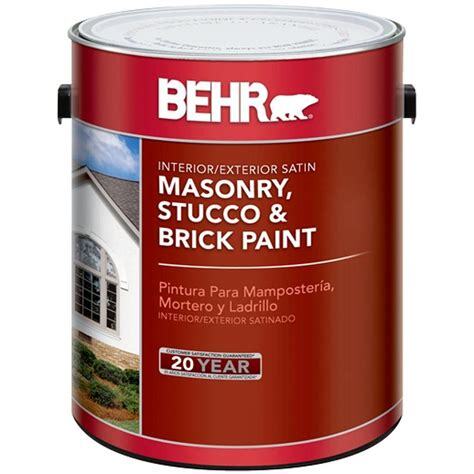
Give Us A Call With Any & All Questions, Or To Schedule Your Free, No Obligation Estimate 503-389-5758
Key Features:
- Definition and Composition:
- Chemical Makeup: Elastomeric paint, also known as elastomeric coating, is a high-build coating formulated from acrylic resins and other flexible ingredients. This paint creates a thick, durable barrier on exterior surfaces, particularly on masonry substrates like stucco and brick.
- Key Properties: The standout features of elastomeric paint include exceptional flexibility, substantial thickness, and impressive durability. It can stretch and move with the underlying surface without cracking or peeling, making it suitable for areas with significant temperature fluctuations or structural movement.
- Benefits of Using Elastomeric Paint:
- Longevity and Durability: Elastomeric paint significantly extends the life of your home's exterior by providing a thick, durable layer that protects the underlying material, especially for stucco surfaces.
- Enhanced Protection: It offers superior waterproofing, forming a flexible, impermeable barrier that prevents water infiltration. This helps protect against water damage and mold growth, maintaining the exterior's clean and healthy appearance.
- Aesthetic Appeal: Available in various textures and colors, elastomeric paint allows homeowners to choose the perfect finish for their home's aesthetic while maintaining a fresh, new appearance over time.
- Application and Practical Tips:
- Preparation Steps: Proper surface preparation is crucial for optimal adhesion and performance. Steps include cleaning the surface thoroughly, repairing damage, and applying a primer if necessary.
- Application Process: Using high-quality brushes, rollers, or sprayers ensures a successful application. Multiple coats are recommended for optimal protection, with sufficient drying time between coats.
- Choosing the Right Elastomeric Paint: Select high-quality brands known for their durability and performance, considering key features such as flexibility, thickness, waterproofing, UV resistance, and breathability.
Everything You Need To Know About Elastomeric
Did you know that a single coat of elastomeric paint could extend the lifespan of your home's exterior by years? This incredible paint offers unparalleled durability and weather resistance, making it an ideal choice for those looking to protect their property from the elements.
Just last summer, we worked with a homeowner in Portland who was frustrated with frequent repainting due to the city's wet climate. After applying elastomeric paint on stucco, they were thrilled to see how effectively it sealed their home against moisture and prevented future peeling and cracking. The transformation was not just aesthetic; it provided peace of mind knowing their home was better protected.
This article will delve into how elastomeric paint works, its myriad benefits, and why it's a smart investment for homeowners. We’ll also discuss the specifics of painting stucco with elastomeric paint, address the disadvantages of elastomeric paint, and highlight its advantages over traditional paint options. Whether you're considering an exterior makeover for your home or looking for a robust solution to protect your stucco or brick surfaces, understanding elastomeric paint can help you make an informed decision.
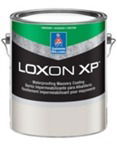
What is Elastomeric Paint?
Definition and Composition
Chemical Makeup: Elastomeric paint, also known as elastomeric coating, is a high-build coating formulated from acrylic resins and other flexible ingredients. It is designed to create a thick, durable barrier on exterior surfaces, particularly on masonry substrates like stucco and brick.
Key Properties: The standout features of elastomeric paint include its exceptional flexibility, substantial thickness, and impressive durability. Unlike traditional paints, elastomeric paint can stretch and move with the underlying surface without cracking or peeling. This flexibility makes it particularly suitable for areas that experience significant temperature fluctuations or structural movement.
How Elastomeric Paint Works
Elasticity: The key to elastomeric paint's performance lies in its elasticity. It can expand and contract in response to changes in temperature and humidity. This characteristic is crucial for surfaces like stucco, which naturally expand and contract. By moving with the substrate, elastomeric paint prevents the formation of cracks and ensures a long-lasting finish.
Waterproofing: One of the primary advantages of elastomeric paint is its waterproofing ability. It forms a waterproof barrier that effectively repels water, protecting the underlying surface from moisture penetration. This feature is especially beneficial for painting exterior brick and stucco, which are often exposed to harsh weather conditions. The waterproofing property helps to prevent issues such as water damage, mold growth, and efflorescence.
Crack Bridging: Elastomeric paint excels at bridging and sealing small cracks and imperfections on the surface. Its thick consistency and flexible nature allow it to fill in minor cracks and gaps, providing a smooth, continuous finish. This capability not only enhances the aesthetic appeal of the surface but also reinforces its structural integrity by preventing the cracks from expanding over time.By understanding the unique properties and working mechanisms of elastomeric paint, homeowners and professionals can make informed decisions about its application and benefits, particularly when dealing with surfaces like stucco and brick.
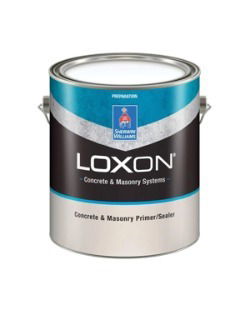
Benefits of Using Elastomeric Paint for Your Home's Exterior
Longevity and Durability
Extended Lifespan: Elastomeric paint significantly extends the life of your home's exterior by providing a thick, durable layer that protects the underlying material. This is especially beneficial when using elastomeric paint on stucco, as it accommodates the natural movement of stucco surfaces, preventing cracks and deterioration over time.
Weather Resistance: One of the primary advantages of elastomeric paint is its ability to withstand harsh weather conditions. Whether it's heavy rain, snow, or extreme heat, elastomeric paint maintains its integrity and continues to protect the exterior of your home.
UV Resistance: Elastomeric paint offers excellent resistance to ultraviolet (UV) rays. This means that the paint retains its color and vibrancy longer than traditional paints, preventing color fading and material degradation. This is particularly important for homes in sunny climates where UV exposure is high.
Enhanced Protection
Waterproofing Benefits: Elastomeric paint provides superior waterproofing capabilities. It forms a flexible, impermeable barrier that prevents water infiltration, protecting your home from water damage. This is especially advantageous for painting stucco with elastomeric paint, as stucco surfaces are prone to water absorption and subsequent damage.
Mold and Mildew Resistance: The waterproof nature of elastomeric paint also contributes to its resistance to mold and mildew. By keeping moisture out, it prevents the growth of these harmful organisms, ensuring that your exterior remains clean and healthy.
Aesthetic AppealVariety of Finishes: Elastomeric paint is available in a range of textures and colors, allowing homeowners to choose the perfect finish for their home's aesthetic. Whether you prefer a smooth, matte look or a textured finish, elastomeric paint can meet your needs.
Maintaining Appearance: One of the key benefits of elastomeric paint is its ability to maintain a fresh, new appearance over time. Its durability and resistance to environmental factors ensure that your home looks well-maintained for years, reducing the need for frequent repainting.
In Our Experience:
"Dealing with Portland's wet climate, we've often seen homeowners struggle with exterior paint jobs that don't hold up. I remember one particular case where a homeowner was constantly repainting their stucco because of cracks and peeling caused by moisture. We suggested using elastomeric paint, which was a game-changer. After applying it, not only did the house look stunning, but it also stayed protected through the seasons, eliminating the frequent repainting cycle. This experience reinforced the importance of choosing the right paint for lasting results and peace of mind."
Comparing Elastomeric Paint to Traditional Exterior Paints
Performance Differences
Flexibility and Crack Bridging: One of the standout features of elastomeric paint is its flexibility. Elastomeric paint can stretch and contract with the underlying surface, making it ideal for materials like stucco that experience frequent expansion and contraction. Traditional exterior paints, in contrast, lack this elasticity and are more prone to cracking over time. This crack-bridging capability of elastomeric paint is crucial for maintaining a smooth and continuous surface, even in the face of minor structural shifts or weather-induced expansion and contraction.
Thickness and Coverage: Elastomeric paint is significantly thicker than traditional paints. This thickness allows it to cover surfaces more effectively, providing a more robust barrier against environmental elements. A single coat of elastomeric paint can often achieve the same coverage and protection as multiple coats of traditional paint. This not only saves time during application but also ensures a more uniform and durable finish. When painting stucco with elastomeric paint, this thickness helps fill in minor imperfections and creates a more even surface.
Cost Analysis
Initial Costs: At first glance, elastomeric paint tends to be more expensive than traditional exterior paints. The higher cost is due to the specialized formulation and superior performance characteristics of elastomeric paint. However, this initial expense should be weighed against the numerous benefits it provides. While traditional paints may appear more budget-friendly upfront, they often require more frequent application and additional coats to achieve similar levels of protection and aesthetic appeal.
Long-Term Savings: Despite the higher initial cost, elastomeric paint can offer significant long-term savings. Its durability and weather resistance reduce the frequency of repainting, which is often required with traditional paints. The extended lifespan of elastomeric paint means fewer applications over time, translating into savings on both paint and labor. Additionally, the superior protection against water infiltration and UV damage helps prevent costly repairs to the underlying structure, particularly when using elastomeric coating for stucco.
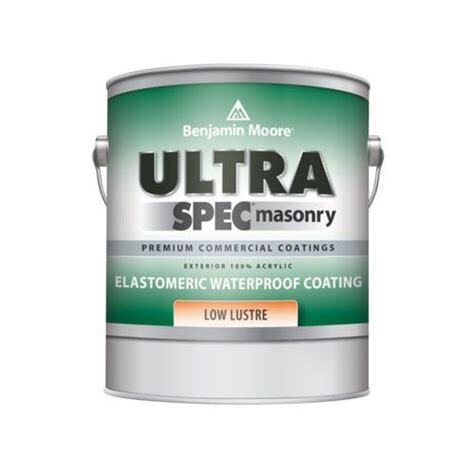
Applications of Elastomeric Paint
Suitable SurfacesMaterials: Elastomeric paint is particularly well-suited for a variety of surfaces, offering versatility and robust protection for both residential and commercial applications. Ideal surfaces for elastomeric paint include:
- Stucco: Elastomeric paint on stucco provides excellent coverage and protection, filling in hairline cracks and preventing water infiltration. Its flexibility allows it to move with the stucco, reducing the risk of cracking and peeling.
- Concrete: The thick, durable nature of elastomeric paint makes it perfect for concrete surfaces. It provides a waterproof barrier and resists the wear and tear common in high-traffic areas.
- Brick: Painting exterior brick with elastomeric paint helps seal the porous surface, offering enhanced weather resistance and a uniform appearance. The paint's ability to bridge small gaps and cracks is particularly beneficial for older brickwork.
- Wood: Although less common, elastomeric paint can be used on wood surfaces to provide a flexible, durable finish that accommodates the natural expansion and contraction of wood.
Surface Preparation: Proper preparation is crucial to ensure optimal adhesion and performance of elastomeric paint. Here are the general steps for preparing different surfaces:
- Stucco: Clean the surface thoroughly to remove dirt, dust, and loose particles. Repair any significant cracks or damage with a suitable filler. Apply a primer if the surface is highly porous or chalky.
- Concrete: Clean the surface using a pressure washer to remove dirt, grease, and old paint. Repair any cracks or holes with a concrete patching compound. Apply a concrete primer to enhance adhesion.
- Brick: Clean the bricks to remove any efflorescence, dirt, and old paint. Use a wire brush to remove loose mortar and debris. Apply a masonry primer to ensure a good bond.
- Wood: Sand the wood surface to remove any rough spots and old paint. Clean the surface to remove dust and debris. Apply a wood primer if the wood is bare or has significant repairs.
Case StudiesResidential Use:
- Case Study 1: A homeowner in a coastal area used elastomeric paint on their stucco home to combat the harsh marine environment. The paint's flexibility and waterproofing properties helped protect the home from saltwater damage and frequent temperature changes, significantly extending the life of the exterior.
- Case Study 2: A house with aging brickwork benefited from elastomeric paint, which sealed small cracks and gaps, preventing water intrusion and improving insulation. The homeowners reported a noticeable reduction in heating and cooling costs after the application.
Commercial Use:
- Case Study 1: A commercial building in a city with extreme weather variations applied elastomeric paint to its concrete exterior. The paint's ability to resist cracking and peeling under temperature fluctuations ensured a long-lasting, low-maintenance finish, reducing the need for frequent repaints.
- Case Study 2: A shopping center opted for elastomeric coating for stucco to enhance its aesthetic appeal and durability. The paint provided a uniform, attractive finish that withstood high foot traffic and environmental stressors, maintaining its appearance over several years.
Surface Preparation: Proper preparation is crucial to ensure optimal adhesion and performance of elastomeric paint. Here are the general steps for preparing different surfaces:
- Stucco: Clean the surface thoroughly to remove dirt, dust, and loose particles. Repair any significant cracks or damage with a suitable filler. Apply a primer if the surface is highly porous or chalky.
- Concrete: Clean the surface using a pressure washer to remove dirt, grease, and old paint. Repair any cracks or holes with a concrete patching compound. Apply a concrete primer to enhance adhesion.
- Brick: Clean the bricks to remove any efflorescence, dirt, and old paint. Use a wire brush to remove loose mortar and debris. Apply a masonry primer to ensure a good bond.
- Wood: Sand the wood surface to remove any rough spots and old paint. Clean the surface to remove dust and debris. Apply a wood primer if the wood is bare or has significant repairs.
Case StudiesResidential Use:
- Case Study 1: A homeowner in a coastal area used elastomeric paint on their stucco home to combat the harsh marine environment. The paint's flexibility and waterproofing properties helped protect the home from saltwater damage and frequent temperature changes, significantly extending the life of the exterior.
- Case Study 2: A house with aging brickwork benefited from elastomeric paint, which sealed small cracks and gaps, preventing water intrusion and improving insulation. The homeowners reported a noticeable reduction in heating and cooling costs after the application.
Commercial Use:
- Case Study 1: A commercial building in a city with extreme weather variations applied elastomeric paint to its concrete exterior. The paint's ability to resist cracking and peeling under temperature fluctuations ensured a long-lasting, low-maintenance finish, reducing the need for frequent repaints.
- Case Study 2: A shopping center opted for elastomeric coating for stucco to enhance its aesthetic appeal and durability. The paint provided a uniform, attractive finish that withstood high foot traffic and environmental stressors, maintaining its appearance over several years.
These case studies highlight how elastomeric paint can be a transformative solution for both residential and commercial properties, providing long-lasting protection and enhanced visual appeal. Whether dealing with stucco, concrete, brick, or wood, elastomeric paint's unique properties make it a versatile choice for various exterior surfaces.
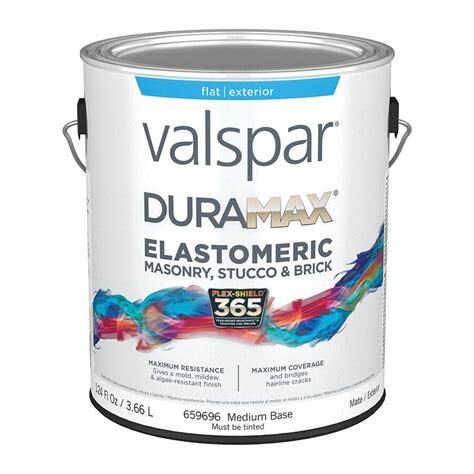
How to Apply Elastomeric Paint
Preparation StepsSurface Cleaning:A clean surface is essential for the effective application of elastomeric paint. Dirt, dust, and grease can prevent the paint from adhering properly, compromising its protective qualities and durability. Here are the steps for surface cleaning:
- Dust and Debris Removal: Use a broom or brush to remove loose dirt and debris from the surface.
- Washing: For thorough cleaning, use a pressure washer to wash the surface, removing all dirt, mildew, and chalking. For areas with mold or mildew, a mixture of water and mild detergent or bleach solution can be used.
- Rinse and Dry: Rinse the surface thoroughly with clean water to remove any cleaning solution residue. Allow the surface to dry completely before proceeding.
Repairing Damage:Before applying elastomeric paint, it's crucial to repair any damage such as cracks and holes. Elastomeric paint's flexibility and thickness can bridge small cracks, but significant damage should be addressed to ensure a smooth and durable finish.
- Inspect the Surface: Carefully examine the surface for cracks, holes, and other imperfections.
- Fill Cracks and Holes: Use an appropriate filler or patching compound to fill in cracks and holes. For stucco, a stucco patching compound is ideal. For concrete and masonry, use a concrete patching compound.
- Sand Smooth: Once the filler has dried, sand the repaired areas to create a smooth surface that blends with the surrounding area.
- Prime if Necessary: If the surface is highly porous or has been repaired extensively, apply a primer to ensure better adhesion of the elastomeric paint.
Application ProcessTools and Techniques:Using the right tools and techniques is essential for a successful application of elastomeric paint.
- Brushes: For detailed work and edges, use high-quality synthetic bristle brushes. Brushes are ideal for cutting in around windows, doors, and corners.
- Rollers: Use a roller with a thick nap (3/4 inch to 1 inch) to apply the paint to larger flat surfaces. The thick nap helps to hold the thicker elastomeric paint and provides even coverage.
- Spray Methods: For large areas or textured surfaces, airless sprayers are highly effective. Adjust the sprayer settings according to the manufacturer’s instructions to achieve an even coat.
Multiple Coats:Applying multiple coats of elastomeric paint is crucial to achieve the desired protection and finish.
- First Coat: Start with a generous first coat, ensuring the paint is applied evenly. The first coat serves as the base layer and helps to fill in any small cracks and surface imperfections.
- Drying Time: Allow the first coat to dry thoroughly. Elastomeric paint typically requires more drying time than traditional paints. Refer to the manufacturer's guidelines, but a common recommendation is to allow 4-6 hours between coats.
- Second and Subsequent Coats: Apply the second coat using the same method as the first. Depending on the surface and desired protection level, additional coats may be necessary. Typically, two to three coats are recommended for optimal protection.
Drying Times:Proper drying times between coats are essential to ensure the paint adheres correctly and provides the maximum level of protection.
- Initial Drying: After applying each coat, allow sufficient time for the paint to dry. This usually ranges from 4-6 hours but can vary based on temperature, humidity, and paint thickness.
- Final Cure: Elastomeric paint typically reaches its final cure within 7-14 days. During this time, avoid exposing the freshly painted surface to harsh conditions or excessive moisture.

Tips for Choosing the Right Elastomeric Paint
Quality Considerations
High-Quality Brands:
Selecting a high-quality elastomeric paint is crucial for achieving the best results and ensuring long-lasting protection for your exterior surfaces. Here are some trusted brands known for their high-quality elastomeric paints:
- Sherwin-Williams: Known for its superior durability and performance, Sherwin-Williams offers elastomeric paints that provide excellent coverage and weather resistance.
- Benjamin Moore: This brand offers premium elastomeric coatings that are ideal for a variety of surfaces, including stucco and masonry.
- Behr: Behr's elastomeric paint line is well-regarded for its affordability and effective protection against harsh weather conditions.
- Valspar: Valspar provides reliable elastomeric paint options that are widely available and known for their flexibility and longevity.
Key Features to Look For:
When selecting elastomeric paint, consider the following key features to ensure you choose the best product for your needs:
- Flexibility: Look for paint that can expand and contract with temperature changes without cracking. This is especially important for surfaces like stucco.
- Thickness: High-build formulas that offer excellent coverage and can bridge small cracks are ideal.
- Waterproofing: Ensure the paint has strong waterproofing capabilities to protect against moisture infiltration.
- UV Resistance: Choose a paint that can withstand UV rays to prevent fading and degradation over time.
- Breathability: The paint should allow moisture to escape from the substrate, preventing issues like mold and mildew.
- Durability: Opt for paint with high resistance to peeling, cracking, and weathering for long-lasting performance.
Hiring Professionals vs. DIYPros and Cons of DIY:Benefits:
- Cost Savings: Doing it yourself can save on labor costs.
- Control: You have complete control over the project timeline and execution.
- Satisfaction: Completing a project yourself can be very rewarding.
Challenges:
- Skill Level: Applying elastomeric paint requires precision and skill to avoid common issues like uneven application and peeling.
- Time-Consuming: DIY projects can take significantly longer, especially for larger surfaces.
- Equipment: Professional-grade equipment for applying elastomeric paint can be expensive and complicated to use.
Professional Services:When and Why to Hire a Professional Painting Service:
- Experience: Professionals have the expertise and experience to ensure the paint is applied correctly and efficiently.
- Quality: High-quality results with an even finish, proper adhesion, and optimal coverage are more likely with a professional.
- Time Efficiency: Professionals can complete the project in a fraction of the time it would take a DIYer.
- Warranty: Many professional painting services offer warranties on their work, providing peace of mind and protection against future issues.
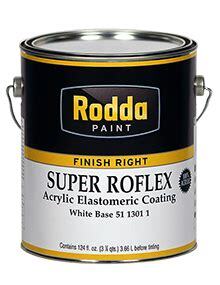
Maintaining Your Elastomeric Paint Job
Regular InspectionsRoutine Checks:
Performing regular inspections is crucial for maintaining the integrity and appearance of your elastomeric paint job. Here's what to look for:
- Cracks and Blisters: Inspect the surface for any new cracks or blisters, which can indicate underlying issues such as moisture infiltration or substrate movement.
- Fading or Discoloration: Check for areas where the color may be fading or changing, which could be a sign of UV damage or environmental exposure.
- Peeling or Flaking: Look for any signs of the paint peeling or flaking off the surface, particularly in high-traffic or weather-exposed areas.
- Mold and Mildew: Inspect for mold or mildew growth, especially in shaded or damp areas where moisture tends to accumulate.
Addressing Issues:
How to handle minor and major issues:
- Minor Issues: For small cracks or blisters, clean the affected area, apply a suitable primer, and then touch up with the same elastomeric paint to ensure a seamless repair.
- Major Issues: If you encounter extensive peeling, large cracks, or significant discoloration, it may be necessary to consult a professional. They can assess the underlying cause and provide a comprehensive solution, which might include removing the damaged paint, repairing the substrate, and reapplying elastomeric paint.
Cleaning and Care
Cleaning Techniques:
Maintaining the cleanliness of your elastomeric paint ensures it continues to protect and enhance your exterior surfaces effectively. Here are some best practices:
- Regular Cleaning: Clean your painted surfaces at least once a year to remove dirt, grime, and other contaminants that can affect the paint's performance.
- Gentle Cleaning Agents: Use mild detergents or specialized exterior cleaning solutions that are safe for elastomeric paint. Avoid harsh chemicals that can damage the paint.
- Soft Brushes and Sponges: Use soft-bristled brushes, sponges, or microfiber cloths to clean the surface gently. Avoid abrasive tools that can scratch or damage the paint.
- Low-Pressure Washing: For extensive cleaning, consider using a low-pressure washer. High-pressure washing can damage the paint and underlying substrate.
Touch-Ups:
When and how to touch up your elastomeric paint:
- Identify Areas Needing Touch-Ups: Look for small chips, scratches, or worn areas that might need touching up.
- Preparation: Clean the area thoroughly and sand any rough edges to ensure a smooth surface. Apply a primer if necessary.
- Matching Paint: Use the same elastomeric paint used initially for consistency in color and texture. If you don't have leftover paint, make sure to match the color accurately.
- Application: Apply the paint using a brush or roller suitable for the surface size. Apply multiple thin coats, allowing each coat to dry according to the manufacturer's instructions.
- Blend Edges: Feather the edges of the touch-up area into the surrounding paint to blend seamlessly.
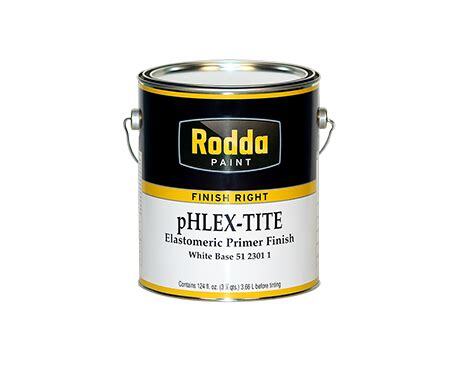
Lightmen Painting’s Expertise with Elastomeric Paint
Our ExperienceCase Studies: Success Stories from Past Projects
- Residential Transformation: A homeowner in Portland needed a durable solution for their stucco exterior, which had developed several cracks due to weather fluctuations. Lightmen Painting applied elastomeric paint on stucco, bridging the cracks and providing a waterproof barrier. The result was a beautifully smooth finish that has held up against the elements for years.
- Commercial Building Revamp: A local commercial building was experiencing frequent issues with water infiltration and peeling paint. Our team recommended an elastomeric coating for stucco to ensure long-lasting protection. The building now boasts a fresh, vibrant look and significantly improved weather resistance, showcasing the advantages of elastomeric paint for such projects.
Customer Testimonials: Feedback from Satisfied Clients
- John R., Homeowner: "Lightmen Painting did an outstanding job on our home's exterior. The elastomeric paint they used not only enhanced the appearance but also provided a durable, protective layer. We couldn't be happier with the results and the professional service we received."
- Sarah M., Property Manager: "We needed a reliable solution for our multifamily properties that would withstand the rainy climate. Lightmen Painting's expertise with elastomeric paint was evident from start to finish. The buildings look great, and the tenants have noticed the difference in reduced dampness and improved insulation."
Why Choose Lightmen Painting?Our Unique Selling Points: Commitment to Quality, Expertise, and Customer Satisfaction
- Extensive Experience: With years of experience in applying elastomeric paint on various surfaces, our team knows the ins and outs of this specialized coating.
- Attention to Detail: We ensure meticulous surface preparation and application techniques to maximize the benefits of elastomeric paint.
- Customer-Centric Approach: We prioritize our clients' needs and satisfaction, offering tailored solutions and transparent communication throughout the project.
Contact Information: How to Get a Quote or Consultation from Lightmen Painting
- Phone: Call us at (503) 389-5758 to speak directly with our team and schedule a consultation.
- Email: Reach out to us at scheduling@lightmenpainting.com for inquiries or to request a detailed quote.
- Website: Visit www.lightmenpainting.com to learn more about our services and view our portfolio.
Recap Key Points
Elastomeric paint offers numerous benefits, including superior durability, crack bridging, and excellent weather resistance, making it an ideal choice for protecting and beautifying your home's exterior.
Action
Consider elastomeric paint for your next exterior painting project and contact Lightmen Painting for professional, high-quality services tailored to your specific needs.
We invite you to share your experiences or ask questions in the comments below. Let’s engage in a conversation about how elastomeric paint can enhance and protect your property.
Do You Have Questions? Give Us A Call With Any & All, Or To Schedule Your Free, No Obligation Estimate 503-389-5758
-
People Also Ask:
What are the benefits of using elastomeric paint on my home’s exterior?
Elastomeric paint offers superior durability, excellent weather resistance, and flexibility, which allows it to bridge and seal small cracks. It is ideal for surfaces like stucco and brick, providing long-lasting protection against moisture, UV rays, and temperature fluctuations.
How does elastomeric paint compare to traditional exterior paints?
Elastomeric paint is thicker and more flexible than traditional paints, allowing it to expand and contract with the surface, preventing cracking. It provides better waterproofing and durability, making it more suitable for harsh weather conditions and surfaces prone to movement, like stucco and brick.
Can I apply elastomeric paint myself, or should I hire a professional?
While DIY application is possible, hiring a professional is recommended for the best results. Professionals ensure proper surface preparation, even application, and optimal coverage, maximizing the benefits of elastomeric paint and extending the lifespan of the exterior finish.
-
SUBSCRIBE TO OUR BLOG: Stay informed with the latest in Painting and DIY projects by subscribing to Lightmen Painting. Get insights, tips, and more delivered straight to your inbox. We would also love to know what you would like to read about, leave thoughts on where we should go next. Interests, Topics, Ideas, all are welcome.
If your in the Portland, Or. area and need advice or a free no obligation estimate call us at 503-389-5758 or email scheduling@lightmenpainting.com
Local Shout Out:
Celebrating Sherwood Police Department: Guardians of Safety and Community Trust
From the team at Lightmen Painting, we extend our deepest appreciation to the Sherwood Police Department for their unwavering commitment to protecting and serving the community. Much like our dedication to excellence and detail in our painting services, the Sherwood Police Department exemplifies integrity, professionalism, and reliability in their daily operations. Their efforts ensure the safety and well-being of residents, fostering a sense of security and trust within the community, much like how we aim to enhance and safeguard the environments we work on.
Thanks for stopping by Lightmen Daily! Stay tuned for more practical tips and expert advice on making your painting projects flawless, from wall to floor!
Definitions
- Elastomeric Paint: A high-build, flexible coating designed for exterior surfaces, formulated from acrylic resins and other ingredients to create a durable, waterproof barrier.
- Acrylic Resins: Chemical compounds used in elastomeric paint to provide flexibility, adhesion, and durability.
- Weather Resistance: The ability of a paint to withstand environmental elements such as rain, wind, and UV rays without degrading.
- UV Resistance: The capacity of a paint to resist damage and color fading caused by ultraviolet (UV) rays from the sun.
- Waterproofing: The process of making a surface impervious to water, preventing moisture penetration and damage.
- Crack Bridging: The ability of elastomeric paint to stretch and cover small cracks, preventing them from expanding and compromising the surface.
- Stucco: A type of exterior plaster used on buildings, often requiring flexible paint like elastomeric to handle expansion and contraction.
- Efflorescence: White, powdery deposits that can form on masonry surfaces when water brings soluble salts to the surface.
- VOC (Volatile Organic Compounds): Harmful chemicals found in some paints that can affect indoor air quality; elastomeric paints often have low VOC options.
- Mildew Resistance: The ability of paint to prevent the growth of mildew, a common problem in high-moisture environments.
- Substrate: The underlying surface on which paint is applied, such as stucco, brick, or concrete.
- Primers: Undercoats applied before the main paint to enhance adhesion and durability, especially on porous or repaired surfaces.
- High-Build Coating: A paint that is applied in thicker layers, providing more coverage and protection.
- Low-Pressure Washing: A gentle cleaning method using a pressure washer with reduced pressure to clean surfaces without causing damage.
- Touch-Ups: Small repairs or additional painting needed to correct imperfections or maintain the paint job over time.
Lightmen Painting Serving: Portland, Tigard, Lake Oswego, Tualatin, West Linn, Milwaukie, Sherwood, Happy Valley, Oregon City, Beaverton, Hillsboro, Gresham

